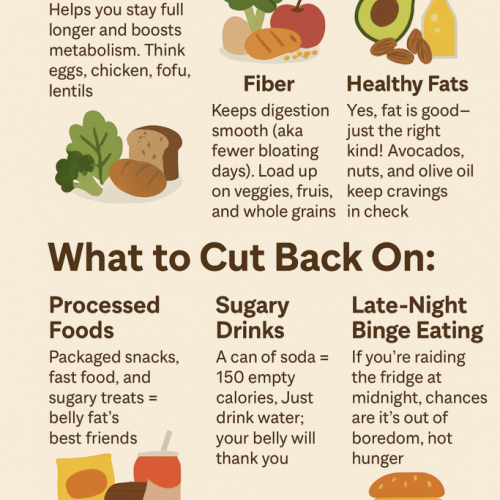Meditation is a word that is being used a lot at the moment. Especially since the COVID-19 pandemic, many people who have not tried meditation or yoga before, are now making it a part of their everyday lives. With that in mind, it might be helpful to dive into how meditation is defined and then share some helpful tips on how to meditate and how to incorporate it into your everyday routines. Here are some key questions and answers about meditation and how to achieve the practice (the list below is not exhaustive!)
What is meditation?
There will be many variations in answer to this question (much like asking what is yoga?) but for me, the answer lies within The Yoga Sutras of Patañjali and the Eight Limbs of Yoga, the sixth dhāranā, concentration, seventh dhyāna meditation and the eighth limb, samādhi full meditative absorption. The following quote from is an apt reminder to modern day practitioner’s yoga is much more than asana practice; “The third limb, āsana, focuses on the stretches and postures with a view to preparing the yogi’s body to sit for prolonged periods in meditation. It is this aspect of yoga that has been most visibly exported to the West but too often stripped from its context as one ingredient in a more ambitious and far reaching sequence” (Bryant 2009). Dhāraṇa-Dhyāna-Samādhi help us gain control over minds. Finally,
Patañjali’s Sutra 1,2 has helped me to understand, and simplify, what meditation is:
“Yogas-citta-vritti-nirodhah: Yoga is the stilling of the changing states of the mind”(1:2)
Another quote that helped me to understand Meditation is from Gurumayi Chidvilasananda where she addresses the common complaint she hears from people saying they can’t meditate. Taken from her book, The Yoga of Discipline; “Whenever you concentrate on something, it is a form of meditation. So meditation is already a natural part of your life.”
Here are some other helpful reads to help you dive into the definitions of meditation:
https://www.yogamatters.com/products/from-mindfulness-to-insight
Meditation for Beginners Book & CD
https://www.yogamatters.com/products/everyday-yoga-meditation
How do you meditate?
To get the best from your chosen meditation practice, consider the following suggestions and to be kind to yourself and not expect “perfect” results each time you sit for meditation. The mind is naturally very busy, so it will take time to slow down and move inwards, remembering that some days will be far easier than others and most importantly, meditation is an individual practice that feels right for you.
Ideal spaces and setting for meditation
- How much space and time do you have available?
- Think cosy! Your room should at ambient temperature so you are not distracted by being too hot/cold
- Have your lighting at a midpoint, so you’re not stimulated by bright lights
- Try to meditate when you know noise around you will be at a minimum
- Sounds; the Tamboura (Indian string instrument), sound of OM or silence
- Scent; Incense – Sandalwood is recommended is help focus the mind and is uplifting
The best time for meditation
- What days would work best for you?
- What time of day would suit you? Bearing noise point above in mind
- Before sunrise? Prana flows from the sun, more conducive to peacefulness before households awaken or at sunset, whichever time offers you most space
- Try for 10 mins, even 5 mins to start with aiming for 20 mins and then see if it feels comfortable to increase to 30 mins then 45 mins with a suggested max at 90 mins at a future point.
The best posture for meditation
- Be as comfortable as possible, consider a meditation cushion and blankets for ultimate comfort & warmth
- Alignment – if sitting in Sukhāsana, Easy pose, sit with knees below line of hips to avoid any discomfort in hip sockets. Try sitting higher, add foam block or blanket to your base if knees are higher than hips
- Seated recommended over laying down due to temptation to fall asleep!
- Mudras are hand gestures that can be used to help you dissolve further into your meditation practice as the gestures channel your body’s energy flow. The most familiar of the mudras is called Gyan, spiritual knowledge, which helps us to concentrate and gain insights to our lives. Gyan mudra is achieved by pressing thumb and index finger together on both hands and allowing the other 3 fingers to be straight
The best breath practice for meditation
- Invite a natural even and comfortable breath, nothing effortful
- If choosing Ujjayi, Victorious breath, this is best practiced alone and not in public so as not to disturb fellow yogis
Different types of meditation to practice
- Samprajñāta Samādhi “Concentration on an object so that the mind can be fully stilled. There are 4 stages”
- Vitarka, Thought application – Concentrating on a physical object and only that object e.g, a candle
- Vichāra, Discernment – Having a mental focal point, recalling that symbol or chanting OM (or chosen mantra)
- Ānanda, Bliss – Using memory to recall experiencing bliss from a past experience
- Asmitā, “Egoism” – Thoughts aimed at reducing “egoism” that concentrate on “I am kind, I am compassionate” thoughts
The best music for meditation
Try focusing on sounds around you, but not defining them. Tune into the sound but try not to engage in the dialogue of the sound. Have you noticed the birdsong early in the morning? There’s a sound meditation for you
Vipassana – “Seeing things as they really are” is the meaning of Vipassana, one of India’s most ancient meditation techniques that helps us to cope with life’s changes without reacting to those changes, promoting equanimity by creating a deeper connection with body and mind. The meditation technique teaches you to observe sensations in the body without reacting “not clinging or craving”. It is taught in a residential centre for 10 days in silence enabling you to practice at home upon completion of the course.
I completed Vipassana for the first time in December 2019 into January 2020 and have to say that I believe the technique helped me to navigate the lockdowns, finding equanimity in my new and unfamiliar routine. I have managed to maintain the Vipassana practice and have a provisional place for a 3 day course in August. I have also served (as a volunteer) for 5 days which was equally beneficial. There is something magical about being amongst others in silence.
Returning to Gurumayi’s quote, mindfulness could be seen as a type of meditation and you’re shifting your awareness to the present which in itself is concentration. I can recall a colleague once sharing a mindfulness technique during a lunchtime session where we were asked to complete a certain number of chews before devouring each bite of our lunch. I was surprised by the simplicity of the request but the power of noticing more of texture, taste and own posture which I had not previously noticed. Try not taking your phone with you on your next walk and notice new things on a familiar route as you go: sounds, smells, types of houses.
Keeping an open mind about your meditation practice
Remember to be kind to yourself and try different times of day to find how and which practice works for you and once you find it enjoy the journey and reap the calming life enhancing benefits of meditation.
Yogamatters’ picks: Essentials for meditation
A comfy seat (or two)
I love this Zabuton cushion, my legs feel really comfortable supported on this base, allowing me to dissolve into my meditation practice. Āsana is Sanskrit for seat (also posture), this Ikat Round Cushion is also a vital item for any duration of meditation practice.
Wrap up
One of my favourite props, these fleece blankets are super warm and cosy – great for meditation and perfect for restorative yoga practice too.
Treat yourself
A nice gift for a new or existing meditator or a mindful gift for yourself!



